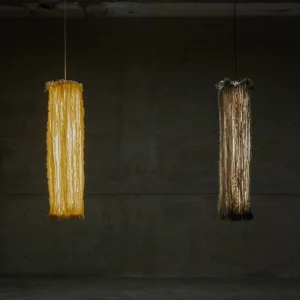Australia’s Commonwealth Scientific and Industrial Research Organization (CSIRO) energy efficiency classification system have rated the 80 square meter house of Morgan as a nine-star design. In Victoria, a six-star standard is the basic benchmark for new homes.
Morgan has undertaken extensive research into renewable power supplies. Having bought the Lexton house in 2004, he along with his wife completed the two-bedroom house with its office, lounge, kitchen, bathroom and a ‘power room’ in late 2008.
The design principles included into this home ensures a comfortable temperature indoors, with no extra heating or cooling appliances. The building is oriented northeast to capture maximum winter sun and to avoid summer rays, with extensive glazing along the face to heat the living area. The house features concrete, double-glazed windows and laminated timber cladding for the exterior.
Morgan describes the house as a brick-veneer house inside-out. A concrete slab floor and concrete blocks in the ‘reverse brick walls’ were the home’s main solar heat banks. He used concrete bricks as internal walls rather than plasterboard, which doesn’t absorb heat. This was done to ensure that the walls trap and distribute solar heat to create a uniform and comfortable temperature. The house also incorporates double doors in the bedrooms to control temperatures.
A sheet of silver-foil insulation behind the internal brick walls with R2.5 fibreglass batts has been wedged into the timber wall frame. The walls have air pockets and the outside cladding of sheets is nine-ply laminated timber painted in reflective white. Morgan used R4 batts between the joists in the roof cavity. A 50mm-thick combined fibreglass and silver-foil insulation blanket has also been laid across the top of the batts to give the roof an R6 rating.
The power room of the house consists of 12 individual two-volt cell batteries, which store 240 volts of energy collected from the 2kW-capacity 12 solar panels on the roof. The power room also houses the home’s switchboard and an inverter which converts the collected energy from direct current to alternating. Once fully charged, the battery bank can store up to about 25kW hours, which is enough for the power needs of the house for several days. For cloudy weather, the house incorporates a gas outlet for a small heater and a battery charger linked to a generator.
Another simple device employed in the house is a set of Velcro strip drapes, where heavy curtains can be easily attached using the sticky strips as substitutes for curtain rods.
According to Morgan, the building’s internal daily temperature has averaged about 16 degrees Celsius in winter and 25 degrees Celsius over summer.
Currently, Morgan plans to enclose a nine square meter north-facing corner of the house with glass. There will be shelves for vegetables. Morgan will also install solar-powered fans to direct the heated air into the main living area.





